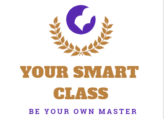Introduction
Physical education (PE) plays a vital role in the holistic development of students. However, successful outcomes in physical education depend not just on teaching methods but also on systematic planning and proper organization of activities. Whether it is a school playground, a gymnasium, or a sports court, well-designed facilities ensure that activities are safe, enjoyable, and productive.
This blog explores the planning and organization of physical education activities with special reference to playfields, courts, gymnasiums, and equipment management.
1. Planning in Physical Education
Planning refers to the process of setting objectives, identifying resources, and arranging activities in a systematic way to achieve maximum benefits.
Key Aspects of Planning:
Identifying age-appropriate activities for students
Allocating space for different sports and games
Ensuring safety standards in facilities and equipment
Scheduling activities for efficient use of time and space
Providing equal opportunities for all learners
Effective planning helps teachers conduct physical activities smoothly and minimizes risks of accidents or injuries.

2. Organization in Physical Education
Organization involves putting the plan into action by arranging students, facilities, and equipment systematically. It ensures discipline, coordination, and proper use of resources.
Principles of Organization:
Proper grouping of students based on age, skill level, or physical capacity
Clear rules and instructions before beginning activities
Efficient distribution and collection of sports equipment
Adequate supervision for safety and fair play
Maintenance of facilities and materials
3. Playfields in Physical Education
A playfield is the central facility for outdoor sports and games. It must be properly planned and maintained to encourage maximum participation.
Characteristics of a Good Playfield:
Adequate size as per the number of students
Well-leveled ground with proper drainage
Clearly marked boundaries for games
Safe surfaces to prevent injuries
Separate areas for different games (football, cricket, hockey, etc.)
Example: A school may have a multipurpose playfield with designated zones for athletics, football, and cricket, making it easier to schedule different activities.
4. Courts in Physical Education
Courts are essential for indoor and outdoor sports such as basketball, volleyball, tennis, and badminton. Properly constructed courts ensure fair play and skill development.
Planning of Sports Courts:
Basketball Court: Standard size of 28m × 15m with appropriate flooring (wooden, synthetic, or concrete).
Volleyball Court: Size of 18m × 9m with non-slippery surface.
Badminton Court: Size of 13.4m × 6.1m with wooden or synthetic flooring.
Tennis Court: Size of 23.77m × 10.97m with proper markings and net height.
Importance: Courts must be constructed with international dimensions, good-quality flooring, and safety measures for effective physical education training.
5. Equipment in Physical Education
Sports equipment is the backbone of physical education programs. The type, quantity, and quality of equipment significantly impact student performance.
Types of Equipment:
Major Equipment: Gym machines, parallel bars, mats, goalposts, nets, etc.
Minor Equipment: Balls, bats, rackets, cones, skipping ropes, stopwatches, etc.
Management of Equipment:
Maintain an updated inventory register
Allocate equipment systematically to avoid misuse
Regular inspection and repair of equipment
Proper storage facilities to prevent damage
Equal distribution to encourage participation
Example: Keeping separate kits for different sports helps in saving time and ensures smooth organization of classes.
6. Gymnasium in Physical Education
A gymnasium is a multipurpose indoor facility where various physical, recreational, and fitness activities are conducted.
Features of a Well-Organized Gymnasium:
Spacious design with proper ventilation and lighting
Installation of gym equipment (treadmills, rowing machines, dumbbells, mats, etc.)
Provision for gymnastics and indoor games
Safety mats and first-aid facilities
Adequate storage rooms for equipment
Importance: A gymnasium helps students develop strength, flexibility, coordination, and endurance throughout the year, regardless of weather conditions.
7. Safety and Maintenance in Physical Education Facilities
Safety is one of the most important considerations in organizing physical education activities.
Safety Measures:
Regular inspection of playfields and courts for damages
Proper supervision during activities
First-aid kits available at all times
Use of protective gear (helmets, pads, etc.) where necessary
Clear emergency exit routes in gymnasiums
Maintenance of facilities ensures longer life of resources and creates a safe environment for learners.
8. Importance of Proper Planning and Organization
When physical education activities are well-planned and organized, they provide:
Maximum student participation
Effective use of space and equipment
Balanced development of physical and mental skills
Safe and disciplined environment
Better learning outcomes in sports and fitness
Conclusion
The planning and organization of physical education activities are crucial for developing students’ physical fitness, teamwork, and discipline. Facilities like playfields, courts, gymnasiums, and equipment must be well-structured and maintained to ensure smooth execution of sports and recreational activities. By investing in proper infrastructure and management, schools and institutions can create an environment that encourages lifelong fitness and healthy lifestyles.








